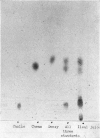Abstract
Small intestinal samples were obtained by intubation from multiple sites along the small intestine in 11 subjects with no known gastrointestinal disease eating a normal diet and at laparotomy in a further three subjects. Free (unconjugated) bile acids were consistently demonstrated in ileal samples, and occasionally in lower jejunal samples, by thin-layer chromatography, supplemented in some cases by gas/liquid chromatography and by infrared spectroscopy. The free bile acid concentration, measured enzymically following thin-layer chromatography, reached a maximum (1 mM) in the lower ileum, where it represented half the total bile acid concentration. Following ampicillin, the concentration of free bile acids decreased markedly, suggesting that they resulted from bacterial deconjugation; at the same time the total bile acid concentration increased, suggesting impaired absorption due to the reduced concentration of the more rapidly absorbed free bile acids. Our results indicate that the presence of free bile acids in lower jejunal and ileal samples is a normal finding, and cannot be taken as evidence of abnormal bacterial overgrowth. They also suggest that bacterial deconjugation at these sites may be a factor contributing to the remarkable efficiency of bile salt reabsorption.
Full text
PDF
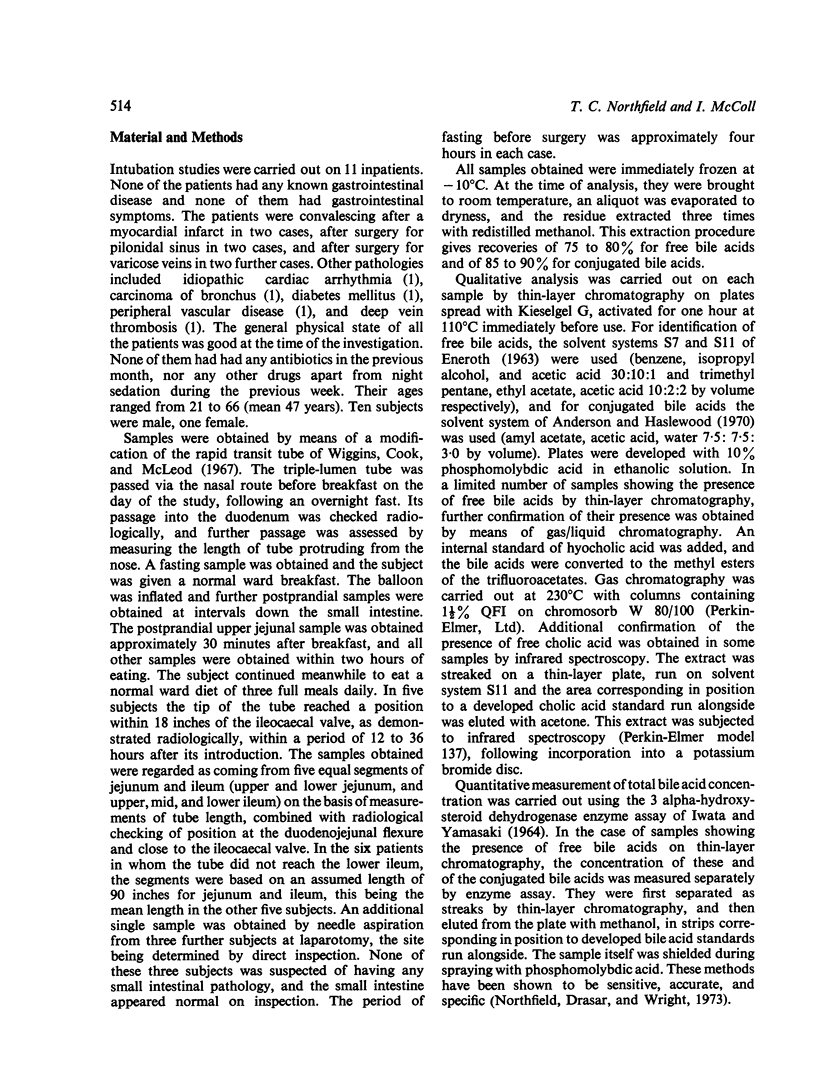
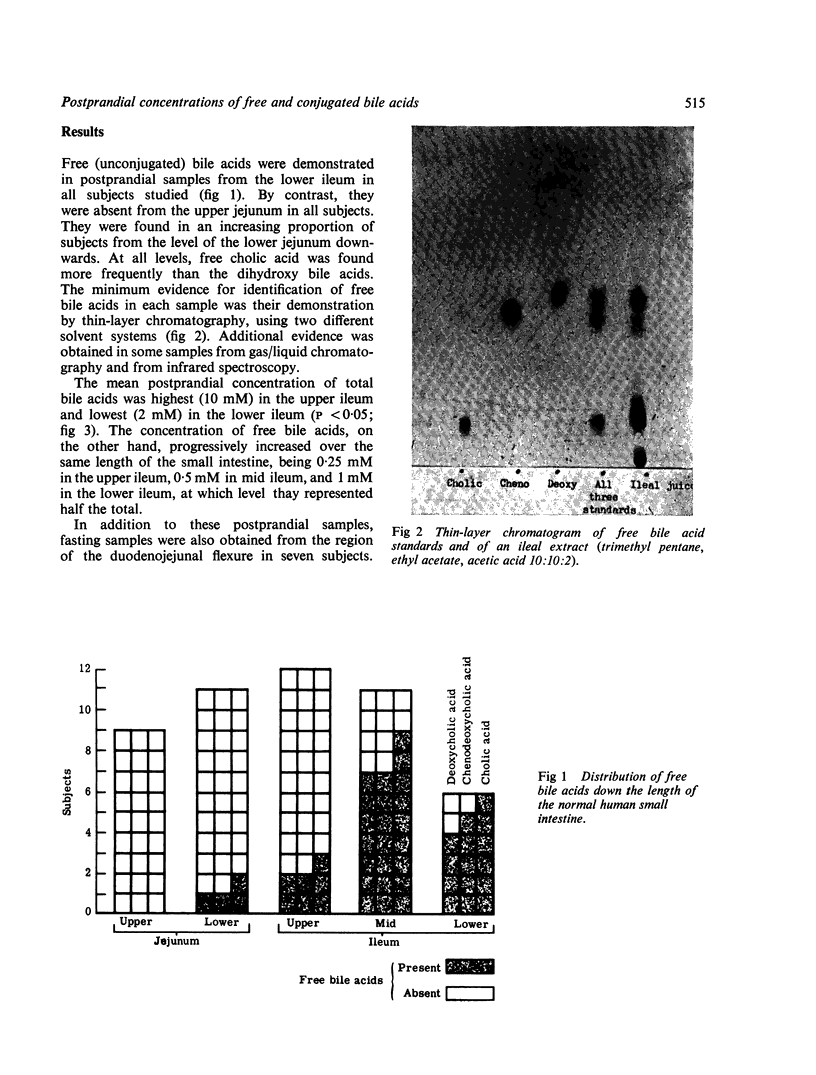
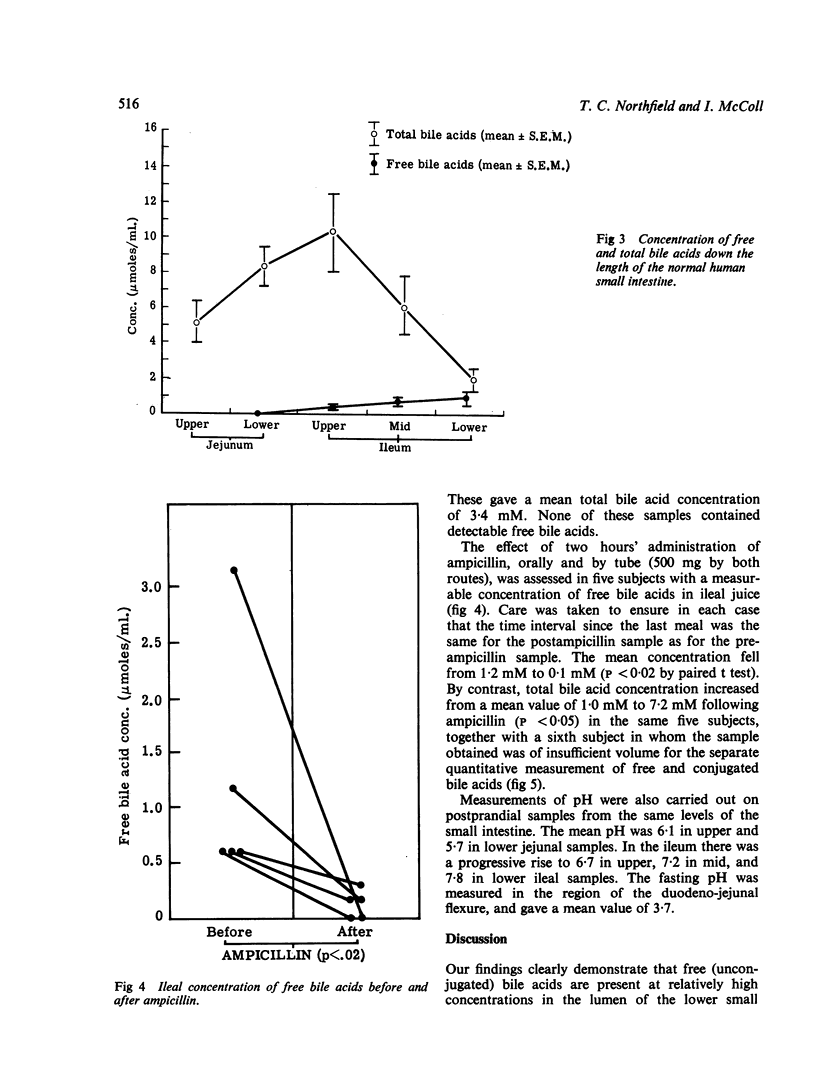

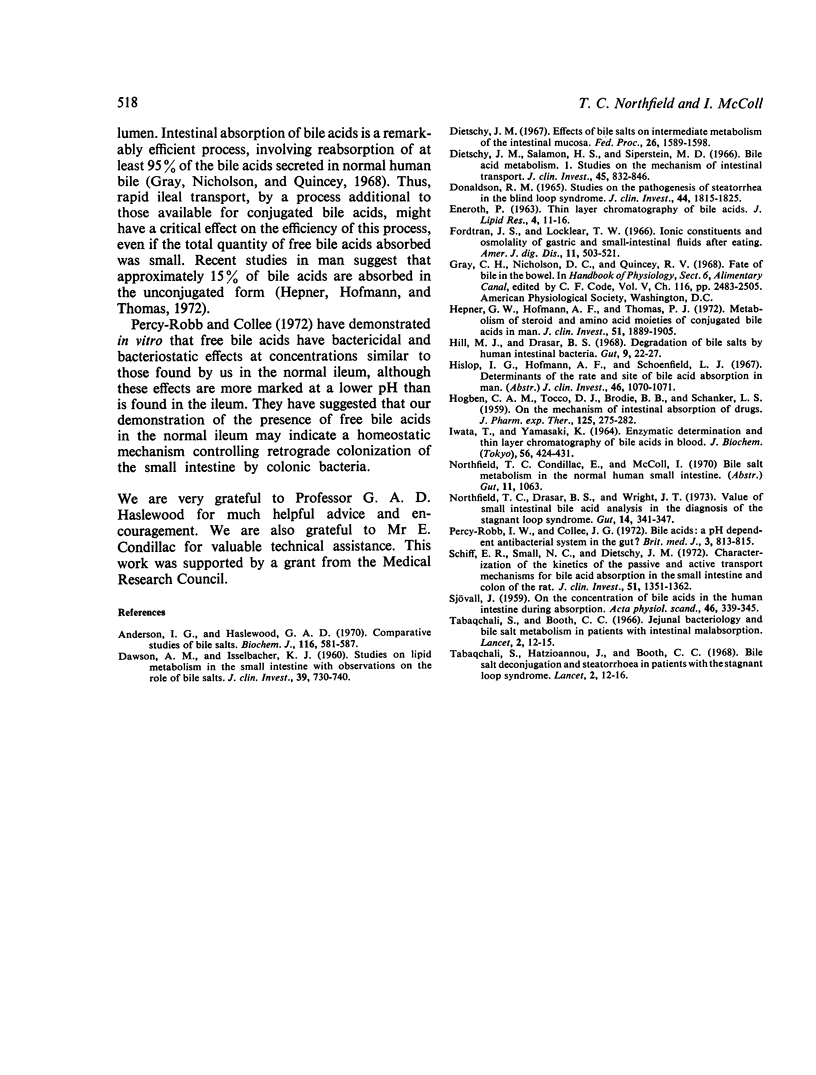
Images in this article
Selected References
These references are in PubMed. This may not be the complete list of references from this article.
- Anderson I. G., Haslewood G. A. Comparative studies of bile salts. 5 alpha-Chimaerol, a new bile alcohol from the white sucker Catostomus commersoni Lacépède. Biochem J. 1970 Feb;116(4):581–585. doi: 10.1042/bj1160581. [DOI] [PMC free article] [PubMed] [Google Scholar]
- DAWSON A. M., ISSELBACHER K. J. Studies on lipid metabolism in the small intestine with observations on the role of bile salts. J Clin Invest. 1960 May;39:730–740. doi: 10.1172/JCI104090. [DOI] [PMC free article] [PubMed] [Google Scholar]
- Dietschy J. M. Effects of bile salts on intermediate metabolism of the intestinal mucosa. Fed Proc. 1967 Nov-Dec;26(6):1589–1598. [PubMed] [Google Scholar]
- Dietschy J. M., Salomon H. S., Siperstein M. D. Bile acid metabolism. I. Studies on the mechanisms of intestinal transport. J Clin Invest. 1966 Jun;45(6):832–846. doi: 10.1172/JCI105399. [DOI] [PMC free article] [PubMed] [Google Scholar]
- Donaldson R. M., Jr Studies on the pathogenesis of steatorrhea in the blind loop syndrome. J Clin Invest. 1965 Nov;44(11):1815–1825. doi: 10.1172/JCI105289. [DOI] [PMC free article] [PubMed] [Google Scholar]
- ENEROTH P. THIN-LAYER CHROMATOGRAPHY OF BILE ACIDS. J Lipid Res. 1963 Jan;4:11–16. [PubMed] [Google Scholar]
- Fordtran J. S., Locklear T. W. Ionic constituents and osmolality of gastric and small-intestinal fluids after eating. Am J Dig Dis. 1966 Jul;11(7):503–521. doi: 10.1007/BF02233563. [DOI] [PubMed] [Google Scholar]
- HOGBEN C. A., TOCCO D. J., BRODIE B. B., SCHANKER L. S. On the mechanism of intestinal absorption of drugs. J Pharmacol Exp Ther. 1959 Apr;125(4):275–282. [PubMed] [Google Scholar]
- Hepner G. W., Hofmann A. F., Thomas P. J. Metabolism of steroid and amino acid moieties of conjugated bile acids in man. II. Glycine-conjugated dihydroxy bile acids. J Clin Invest. 1972 Jul;51(7):1898–1905. doi: 10.1172/JCI106992. [DOI] [PMC free article] [PubMed] [Google Scholar]
- Hill M. J., Drasar B. S. Degradation of bile salts by human intestinal bacteria. Gut. 1968 Feb;9(1):22–27. doi: 10.1136/gut.9.1.22. [DOI] [PMC free article] [PubMed] [Google Scholar]
- IWATA T., YAMASAKI K. ENZYMATIC DETERMINATION AND THIN-LAYER CHROMATOGRAPHY OF BILE ACIDS IN BLOOD. J Biochem. 1964 Nov;56:424–431. doi: 10.1093/oxfordjournals.jbchem.a128013. [DOI] [PubMed] [Google Scholar]
- Northfield T. C., Condillac E., McColl I. Bile salt metabolism in the normal human small intestine. Gut. 1970 Dec;11(12):1063–1063. [PubMed] [Google Scholar]
- Northfield T. C., Drasar B. S., Wright J. T. Value of small intestinal bile acid analysis in the diagnosis of the stagnant loop syndrome. Gut. 1973 May;14(5):341–347. [PMC free article] [PubMed] [Google Scholar]
- Percy-Robb I. W., Collee J. G. Bile acids: a pH dependent antibacterial system in the gut? Br Med J. 1972 Sep 30;3(5830):813–815. doi: 10.1136/bmj.3.5830.813. [DOI] [PMC free article] [PubMed] [Google Scholar]
- SJOVALL J. On the concentration of bile acids in the human intestine during absorption. Bile acids and sterioids 74. Acta Physiol Scand. 1959 Aug 31;46:339–345. doi: 10.1111/j.1748-1716.1959.tb01763.x. [DOI] [PubMed] [Google Scholar]
- Schiff E. R., Small N. C., Dietschy J. M. Characterization of the kinetics of the passive and active transport mechanisms for bile acid absorption in the small intestine and colon of the rat. J Clin Invest. 1972 Jun;51(6):1351–1362. doi: 10.1172/JCI106931. [DOI] [PMC free article] [PubMed] [Google Scholar]
- Tabaqchali S., Booth C. C. Jejunal bacteriology and bile-salt metabolism in patients with intestinal malabsorption. Lancet. 1966 Jul 2;2(7453):12–15. doi: 10.1016/s0140-6736(66)91744-2. [DOI] [PubMed] [Google Scholar]
- Tabaqchali S., Hatzioannou J., Booth C. C. Bile-salt deconjugation and steatorrhoea in patients with the stagnant-loop syndrome. Lancet. 1968 Jul 6;2(7558):12–16. doi: 10.1016/s0140-6736(68)92888-2. [DOI] [PubMed] [Google Scholar]



